COVID-19: TCTMD’s Dispatch for February Week 1
We’re curating a list of COVID-19 research and other useful content, and updating it regularly.
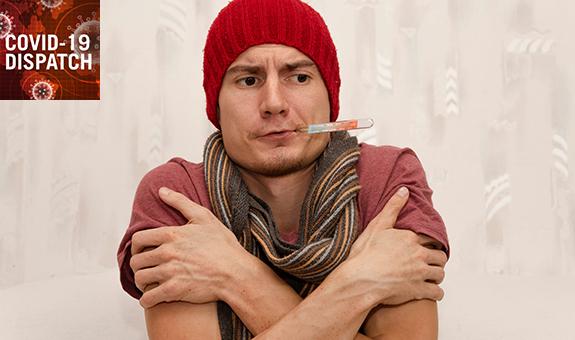
Since March 2020, TCTMD reporter Todd Neale has been writing up breaking news and peer-reviewed research related to COVID-19 every weekday. In July 2021, we transitioned to Mondays, Wednesdays, and Fridays. If you have something to share, tell us. All of our COVID-19 coverage can be found on our COVID-19 Hub.
February 4, 2022
 The second Olympic Games under COVID-19’s shadow have kicked off in Beijing. ABC News takes a comprehensive look at the stringent measures in place to keep athletes safe and spectators at home.
The second Olympic Games under COVID-19’s shadow have kicked off in Beijing. ABC News takes a comprehensive look at the stringent measures in place to keep athletes safe and spectators at home.
In what will be the most sweeping vaccine mandate in Europe, Austria is moving ahead with plans for compulsory vaccination of everyone 14 years and older, effective this Sunday. “Roughly 69% of Austria's population is fully vaccinated against COVID-19, one of the lowest rates in western Europe, which the conservative-led government says justifies the measure and its fines of up to 3,600 euros ($4,109) for breaches,” Reuters reports. Austria’s upper house of parliament passed the legislation yesterday “by a large margin.”
More than 3.6 million Americans missed work in January due to COVID-19, setting a new record, Reuters reports, with the dates coinciding with Omicron’s peak. Labor Department data released today show that figure has more than doubled since December—the rate is the highest ever recorded since data on workplace absences started to be collected back in 1976.
Different countries have staved off or succumbed to the COVID-19 pandemic in starkly different ways. An analysis in the Lancet this week examines the factors behind the variations in cumulative infections as well as infection-to-fatality ratios. Median age and gross domestic product tended to explain some of the variation between countries, but other aspects played a role. National mean BMI, for example, tended to impact mortality, whereas things like trust in the government and interpersonal trust, as well as less government corruption, had larger, statistically significant associations with lower infection rates. Much of the variation, however, could not be fully explained in modeling.
“Omicron’s rapid spread throughout South Africa has resulted in fewer hospitalizations and deaths per documented case than were seen during previous COVID-19 waves, an observation that some members of a weary public are understandably eager to ascribe to an intrinsic tendency of this variant to cause less-severe illness,” write Roby P. Bhattacharyya, MD, PhD, and William P. Hanage, PhD, in the New England Journal of Medicine. But as their perspective sets out, “caution is warranted” in assuming that successive generations of COVID-19 will lead to less-severe disease.
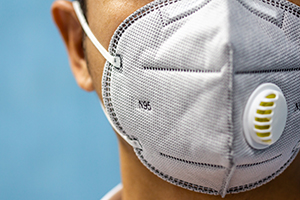 Masks work. That’s the take-away from the latest analysis to dig into this. PhD candidate Kristin L. Andrejko and colleagues conducted a test-negative design case-control study that enrolled randomly selected residents of California who underwent SARS-CoV-2 testing between February 18 and December 1, 2021. Compared with no mask use, a cloth mask cut the odds of testing positive by 56%, a surgical mask by 66% and an N95/KN95 by 83%. Full results are published in Morbidity and Mortality Weekly Report.
Masks work. That’s the take-away from the latest analysis to dig into this. PhD candidate Kristin L. Andrejko and colleagues conducted a test-negative design case-control study that enrolled randomly selected residents of California who underwent SARS-CoV-2 testing between February 18 and December 1, 2021. Compared with no mask use, a cloth mask cut the odds of testing positive by 56%, a surgical mask by 66% and an N95/KN95 by 83%. Full results are published in Morbidity and Mortality Weekly Report.
Several reports in recent months have shown that children are making up a larger proportion of hospitalizations than at any other point in the pandemic. A Nature news story explores whether that’s something unique to the Omicron variant, and what other factors are at play.
Symptoms such as “brain fog,” shortness of breath, fatigue, and muscle weakness, as well as more-serious new-onset neuropsychiatric conditions and type 2 diabetes, have been frequently described in people who’ve recovered from COVID-19, but background rates among people who never tested positive for COVID-19 are unknown. An analysis of 338,024 people under the age of 20 and 1.7 million people 20 years or older confirms that new diagnoses of shortness of breath, heart rate abnormality, and type 2 diabetes were more common among those hospitalized after a positive versus negative test result. Fatigue was more common among those ages 20 or older, while anxiety and depression were more common in the younger subjects. “These estimates highlight the need for healthcare professionals and patients to monitor for development of new symptoms and conditions beyond the first month after SARS-CoV-2 infection, particularly for individuals who required hospitalization for acute COVID-19,” investigators conclude in JAMA.
Monoclonal antibodies (mAb) have been FDA-approved for use in people with mild-to-moderate COVID-19 at risk for progression to severe illness, but the limited quantities have led the agency to prioritize their use in people with risk factors such as age and comorbidities. But as Caroline L. Behr, AB, and colleagues report in JAMA, between November 2020 and August 2021, only 7.2% of eligible, nonhospitalizated Medicare beneficiaries received the agents. Worryingly, “in many cases, patients at the highest risk of severe disease were the least likely to receive mAb therapy. There was also extreme variation geographically.”
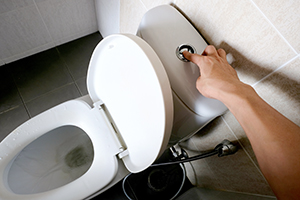 The US Centers for Disease Control and Prevention (CDC) has added wastewater to its arsenal of tools for tracking COVID-19 levels. The tool tracks 15 percent changes in the levels of SARS-CoV-2 RNA measurements in the “sewershed.” A New York Times story explains how and why.
The US Centers for Disease Control and Prevention (CDC) has added wastewater to its arsenal of tools for tracking COVID-19 levels. The tool tracks 15 percent changes in the levels of SARS-CoV-2 RNA measurements in the “sewershed.” A New York Times story explains how and why.
February 2, 2022
Fully 10 billion COVID-19 vaccines have “gone into arms,” making this the largest, swiftest vaccination program in history. Marking this milestone, a news story in Nature notes that while more than 60% of the world’s population has received at least one dose, only 5.5% of the world’s poorest nations have received two doses. “Until we correct this inequity, the world will continue to see new variants,” warns Mosoka Fallah, founder of Refuge Place International, a public-health organization based in Bassa Town, Liberia.
“Death rates are so high in the States — eye-wateringly high,” a global public health expert said. Despite having one of the world’s most powerful arsenals of vaccines, the U.S. has failed to inoculate as much of its population as other wealthy nations. https://t.co/wj5vcBTi9w
— The New York Times (@nytimes) February 2, 2022
Nearly 2 years into the global pandemic, the United States has the highest death rate of any country in the world. “The coronavirus is killing Americans at far higher rates than people in other wealthy nations, a sobering distinction to bear as the country charts a course through the next stages of the pandemic,” the New York Times reports. While other countries had higher per capita death rates earlier in the pandemic—for example, Britain and Belgium—the US has taken over that top spot. It’s also weathered a much steeper rise in deaths due to the Omicron variant than any other nation.
Pfizer and BioNTech have started a “rolling submission” for emergency use authorization of their COVID-19 vaccine in children under the age of 5, the joint venture announced today. “With pediatric COVID-19 cases surpassing 10 million and at the request of the FDA, the companies have submitted available data on the safety and efficacy of two 3-µg doses as part of a three-dose primary series for this age group to address the urgent public health need,” a press release notes. Additional data on a third 3-µg dose in this age group will head to the FDA in the coming months.
US data are shoring up reports from other parts of the globe during Omicron’s surge: full vaccination appears to be protective against severe disease, hospitalization, and death following infection with this strain. The addition of a booster shot, write investigators in Morbidity and Mortality Weekly Report, dropped rates of infection and severe disease, hospitalization, and death even further. “Efforts to promote COVID-19 vaccination and boosters are critical to preventing COVID-19–associated hospitalizations and severe outcomes,” they conclude.
A study of workplace antigen tests in Canada between January 11 and October 13, 2021, published in JAMA, indicates that the number of false-positives generated from among more than 900,000 volunteers was low overall, representing just 0.05% of workers screened. But false-positives also made up 46% of the positive tests confirmed on PCR testing. Those false-positives appeared to be clustered temporally and geographically, and subsequently were traced to a single batch of Abbott’s Panbio COVID-19 Ag Rapid Test Device. “These results inform the discussion of whether rapid antigen tests will result in too many false-positives that could overwhelm PCR testing capacity in other settings,” the authors write, adding that the findings also “demonstrate the importance of having a comprehensive data system to quickly identify potential issues.”
 As seen for other emergent conditions, the number of patients presenting to US hospitals with acute type A aortic dissections dropped during the initial phase of the COVID-19 pandemic, according to new nationwide data presented at the virtual Society of Thoracic Surgeons (STS) 2022 meeting this week. As Todd Neale reports for TCTMD, operative repair outcomes remained reassuringly similar.
As seen for other emergent conditions, the number of patients presenting to US hospitals with acute type A aortic dissections dropped during the initial phase of the COVID-19 pandemic, according to new nationwide data presented at the virtual Society of Thoracic Surgeons (STS) 2022 meeting this week. As Todd Neale reports for TCTMD, operative repair outcomes remained reassuringly similar.
People have used everything from pantyhose and tape to rubber bands and first-aid gauze to improve the fit and seal of both surgical and KN95 masks, and now a paper in PLOS ONE has assessed a range of “fit hacks” to help keep users safe. Here, pantyhose prove the most efficacious, but in news that won’t come as a huge surprise to women the world over, “many of the most effective hacks are very uncomfortable and unlikely to be tolerated for extended periods of time.”
And the question on everyone’s mind: will Omicron end the pandemic? Nature reached out to several international experts to get their predictions. The consensus: Omicron will by no means be the last variant, but there are hopeful signs that variants may get milder with each iteration. Full transition to an “endemic” virus, however, will likely take decades.
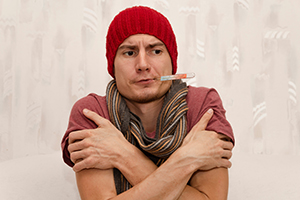 A number of news outlets have launched their own “Olympic Games COVID-19 Tracker” to keep tabs on which athletes have tested positive, which ones now have to forego their events, and which ones may yet test negative again in time to compete. These last face a week of nail-biting, hoping their symptoms or any lasting effects don’t hold them back in their events.
A number of news outlets have launched their own “Olympic Games COVID-19 Tracker” to keep tabs on which athletes have tested positive, which ones now have to forego their events, and which ones may yet test negative again in time to compete. These last face a week of nail-biting, hoping their symptoms or any lasting effects don’t hold them back in their events.
January 31, 2022
 In England, the government announced today that it will make a “U-turn” on vaccine mandates for health and social care workers in England. Health Secretary Sajid Javid made the announcement on Monday evening amid fears that mandating all National Health Service (NHS) workers get the jab could lead to an “exodus of thousands of health workers,” the Guardian reports.
In England, the government announced today that it will make a “U-turn” on vaccine mandates for health and social care workers in England. Health Secretary Sajid Javid made the announcement on Monday evening amid fears that mandating all National Health Service (NHS) workers get the jab could lead to an “exodus of thousands of health workers,” the Guardian reports.
The US Food and Drug Administration has formally approved Moderna’s mRNA vaccine (Spikevax) for the prevention of COVID-19 in individuals 18 years and older, making it the second vaccine to be officially cleared in the United States. The Pfizer/BioNTech vaccine was approved last summer. Both have been available under emergency use authorization since December 2020. “The public can be assured that Spikevax meets the FDA’s high standards for safety, effectiveness, and manufacturing quality required of any vaccine approved for use in the United States,” acting FDA Commissioner Janet Woodcock, MD, said in a press release, noting that “hundreds of millions” of doses have already been given.
Meanwhile, Novavax said in a press release Monday that it has submitted its application to the FDA for emergency use authorization of its COVID-19 vaccine after demonstrating an overall efficacy of approximately 90% in its PREVENT-19 trial. As a New York Times article points out, however, “it is not clear what, if any, role Novavax’s vaccine will play in the United States if it wins clearance. The federal government ordered 110 million doses of the shot in two deals reached with the company in 2020, but the United States is now flush with other vaccines and does not need more supplies.”
This morning, I tested positive for COVID-19. I’m feeling fine – and I’ll continue to work remotely this week while following public health guidelines. Everyone, please get vaccinated and get boosted.
— Justin Trudeau (@JustinTrudeau) January 31, 2022
Canadian Prime Minister Justin Trudeau has tested positive for COVID-19, he announced on Twitter earlier today, adding that he “is feeling fine” and is isolating. His announcement comes as downtown Ottawa has been transformed “into a parking lot” by long-haul truckers protesting vaccine mandates, an effort that has “snowballed into a movement against all pandemic restrictions” marred by hate messaging and vandalism, the Globe and Mail reports. Trudeau later said, at a news conference, that two of his three children have also tested positive.
Immunocompromised adults who received a third dose of an mRNA vaccine were significantly less likely to be hospitalized for COVID-19, according to an analysis in Morbidity and Mortality Weekly Report, although protection was not as high as that seen in nonimmunocompromised adults who’d received two doses plus a booster. “In a study of hospitalized adults, compared with receipt of two mRNA COVID-19 vaccine doses, receipt of a third dose increased vaccine effectiveness against hospitalization among adults without and with immunocompromising conditions, from 82% to 97% and from 69% to 88%, respectively,” investigators write. Of note, the study was conducted when the Delta variant was predominant.
Another analysis, this one from Qatar during periods of circulation of the Beta and Delta variants, confirms the pattern of peak efficacy and subsequent waning seen in other studies of mRNA vaccine effectiveness. Writing in a research letter in the New England Journal of Medicine, investigators conclude that while protection against infection appears to wane “month by month” following a second mRNA dose, protection against hospitalization and death “appeared to be robust, with no evidence of waning for several months after the second dose.”
In a “technical briefing” released last Friday, the UK Health Security Agency concluded that Omicron sublineage BA.2 has a higher growth rate than the original Omicron, but said a preliminary assessment showed no evidence of a difference in vaccine effectiveness against symptomatic disease between the two. A press release provides an explainer.
As Andrew Joseph writes in STAT, Omicron had already been outsmarting existing vaccines in that even vaccinated people have been testing positive or falling ill. “But crucially,” he notes, “the vaccines’ protection against severe disease with Omicron has broadly stood up, and booster doses have helped shore up much of the protection that was lost.”
Two studies published last week in Science—one by researchers at Clalit Health Services in Tel Aviv, Israel, and the other a partnership between Yale University and Maccabi Healthcare Services in Tel Aviv—confirm that COVID-19 can help prevent household transmissions, with one of the papers warning that protections wane over time. CIDRAP News has the details.
An “easy-to manufacture elastomeric harness” could be used to improve the fit of standard surgical masks, reducing the risks of infection, researchers write in JAMA Network Open. Their study used infrared imaging to identify areas of air leakage around standard surgical masks on mannequin heads, but showed this could be significantly reduced when different elasticized harnesses were used, bringing them closer to the fit of an N95 respirator. “The use of rubber-band harnesses with surgical masks has been reported, but they lack the consistency and comfort that can be achieved with manufactured harnesses,” the authors argue. Supplemental figures show the harness design and breathing simulation used in the study.
 In JAMA, a randomized clinical trial addressing how consumers interpret and act on results of at-home COVID-19 tests suggests that many people who test negative fail to take into account a high pretest probability of infection and ignore federal self-quarantine recommendations. Others may quarantine unnecessarily because they misinterpret the implications of test results. “Redesigned instructions may increase the benefits and reduce the harms from at-home self-test kits,” the authors conclude.
In JAMA, a randomized clinical trial addressing how consumers interpret and act on results of at-home COVID-19 tests suggests that many people who test negative fail to take into account a high pretest probability of infection and ignore federal self-quarantine recommendations. Others may quarantine unnecessarily because they misinterpret the implications of test results. “Redesigned instructions may increase the benefits and reduce the harms from at-home self-test kits,” the authors conclude.
On Friday, the FDA announced a Class I recall for the Empowered Diagnostics, LLC, CovClear COVID-19 Rapid Antigen Test and ImmunoPass COVID-19 Neutralizing Antibody Rapid Test, noting that neither has been authorized, cleared, or approved by the agency. This recall joins a list of others in recent weeks. The FDA maintains a list of all of its authorized molecular and antigen diagnostic tests.
Todd Neale is the Associate News Editor for TCTMD and a Senior Medical Journalist. He got his start in journalism at …
Read Full Bio


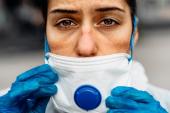

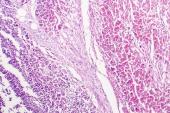
Comments